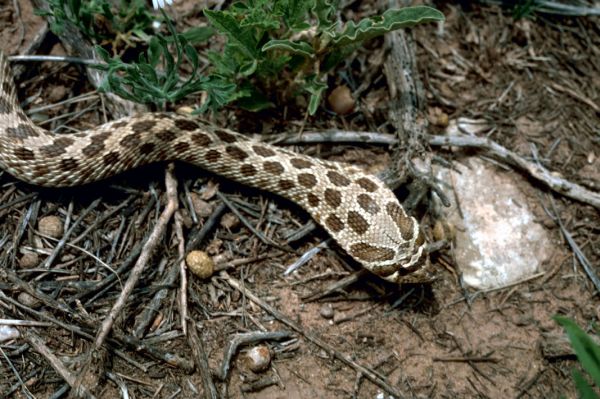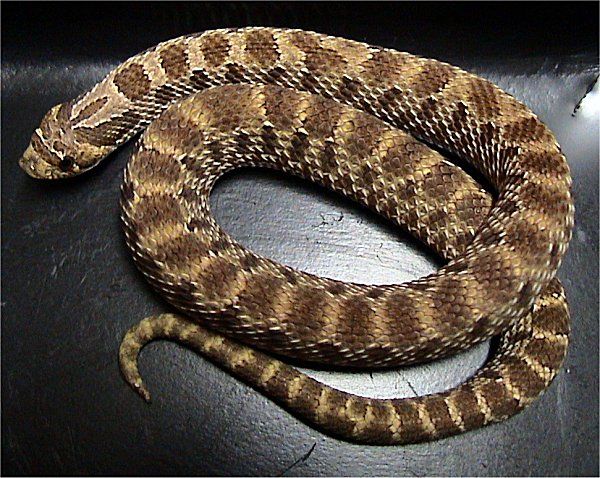Wildlife North America . com North American Animals - mamals, birds, reptiles, insects |
Western Hognose Snake (Heterodon nasicus)
Western Hognose Snake Photograph by Gary M Stolz, U.S. Fish and Wildlife Service. License: Public Domain. (view image details) 
Western Hognose Snake Photograph by LA Dawson. Some rights reserved. (view image details)
WESTERN HOGNOSE SNAKE FACTS
DescriptionThe Western Hognose Snake is light brown with dark brown or gray blotches. The underside often has a black and white checkered pattern, sometimes with some orange. They are stocky snakes with an upturned snout which they use for digging in the soil. Other Names Blowing Adder, Blowing Viper, Prairie Hog-nosed Snake, Plains Hognose Snake Size can grow from 40cm - 85cm long. Females are generally larger than males. Environment shortgrass prairies, grasslands, and rocky, semi-arid regions. Food amphibians, lizards, and rodents. Breeding They breed in the spring. Oviparous, with females laying 4 - 23 eggs from June to August. Eggs hatch after approximately 60 days. Hatchlings are 15-19 cm in length, Range Found from southern Alberta and Manitoba in Canada, to Arizona and Texas in the United States, as far as northern Mexico. Notes The Hognose Snake is not considered dangerous to humans. It is a docile snake, and does not bite in defense. It may hiss and make mock strikes if harassed, and may play dead. The Western Hognose is commonly kept in captivity as a reptile pet. It is fairly hardy and its docile nature makes it a good choice for a pet snake. They are bred in captivity and some color variations are being produced including high red, high orange, and albinos. Classification
Relatives in same Genus Eastern Hognose Snake (H. platirhinos) Home | Mammals | Reptiles | Birds | Insects | Privacy Policy | Disclaimer | Contact Us |